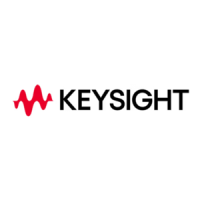53210A Math, Graphing, and Data Logging 6
Keysight 53210A User’s Guide 163
Setting Lower and Upper Limits
Lower and upper limits are set using the commands:
CALCulate[1]:LIMit:LOWer[:DATA] {<value>}|MINimum|MAXimum|DEFault}
CALCulate[1]:LIMit:LOWer[:DATA]? |MINimum|MAXimum|DEFault}
(query form)
CALCulate[1]:LIMit:UPPer[:DATA] {<value>}|MINimum|MAXimum|DEFault}
CALCulate[1]:LIMit:UPPer[:DATA]? |MINimum|MAXimum|DEFault}
(query form)
The lower limit and upper limit value ranges are:
-1.0E+15 to -1.0E-15, 0.0, 1.0E-15 to 1.0E+15
The default limits and the limits set following a reset (*RST) or instrument preset
(
SYSTem:PRESet) are 0.0.
When using limits, both a lower limit and an upper limit must be specified. Any of
the following steps will prevent a “settings conflict” error (e.g. lower limit greater
than upper limit) due to the order in which limits are set:
– setting the upper limit first
– setting both limits on the same line programmatically
– enabling limit testing after the limits are set
To programmatically determine if a reading (or readings) outside the limit
boundaries has occurred, the command:
STATus:QUEStionable:EVENt?
is used to read the Questionable Data register. A value of +2048 (bit 11) indicates a
reading below the lower limit. A value of
+4096 (bit 12) indicates a reading above
the upper limit. Reading the register also clears all bits in the register (see
“Clearing Limit Conditions”).

